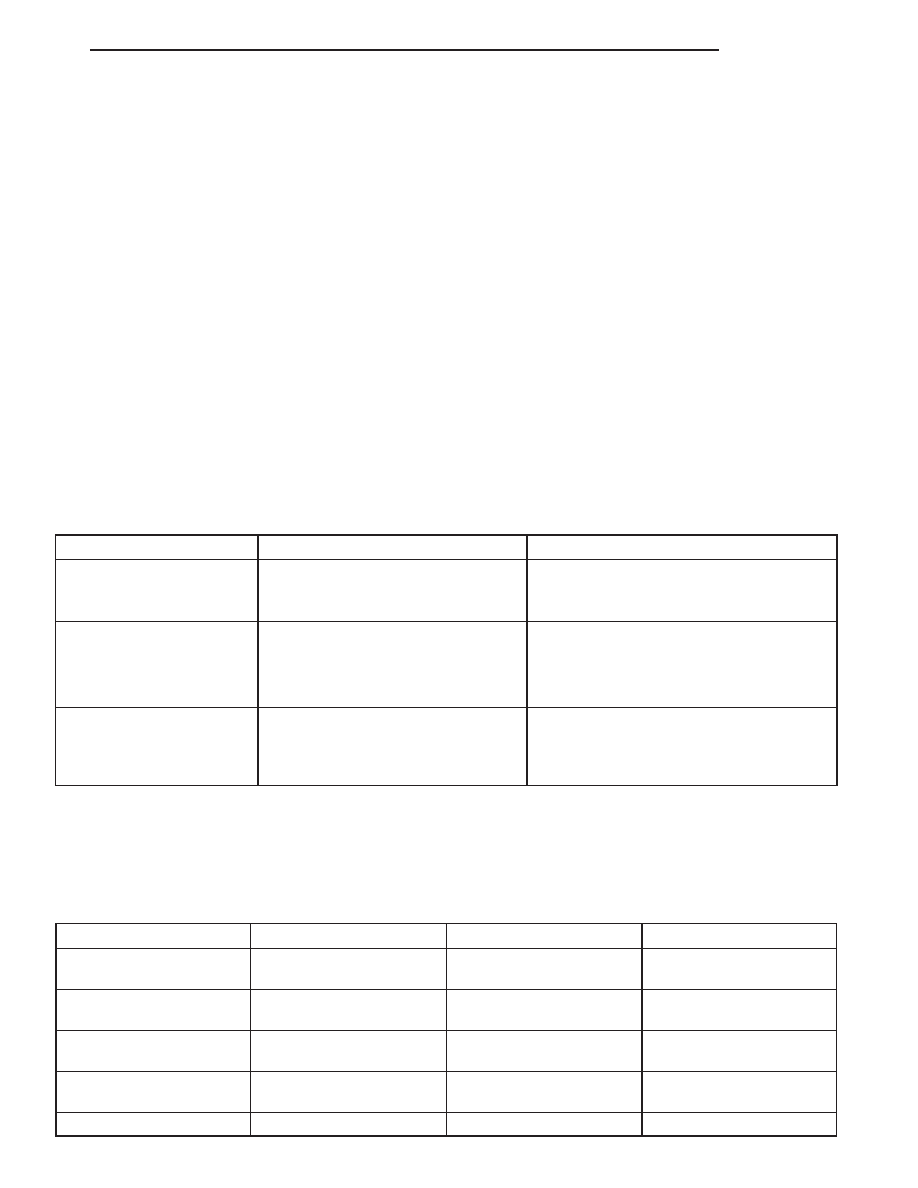Dodge Durango (HB). Manual - part 16

CAUTION: Suspension components with rubber/urethane bushings (except stabilizer bar) should be tight-
ened with the vehicle at normal ride height. It is important to have the springs supporting the weight of the
vehicle when the fasteners are torqued. If springs are not at their normal ride position, vehicle ride comfort
could be affected and premature bushing wear may occur.
DIAGNOSIS AND TESTING
SPRING AND SHOCK
A knocking or rattling noise from a shock absorber may be caused by movement between mounting bushings and
metal brackets or attaching components. These noises can usually be stopped by tightening the attaching nuts. If
the noise persists, inspect for damaged and worn bushings, and attaching components. Repair as necessary if any
of these conditions exist.
A squeaking noise from the shock absorber may be caused by the hydraulic valving and may be intermittent. This
condition is not repairable and the shock absorber must be replaced.
The shock absorbers are not refillable or adjustable. If a malfunction occurs, the shock absorber must be replaced.
To test a shock absorber, hold it in an upright position and force the piston in and out of the cylinder four or five
times. The action throughout each stroke should be smooth and even.
If the vehicle is used for severe, off-road operation, the springs should be examined periodically. Check for broken
colis. Refer to Spring and Shock Absorber Diagnosis chart for additional information.
SPRING AND SHOCK ABSORBER
CONDITION
POSSIBLE CAUSES
CORRECTION
REAR OF VEHICLE SAGS
1. Broken coil spring.
1. Replace spring.
2. Spring fatigue.
2. Replace spring.
SPRING NOISE
1. Worn springs.
1. Replace spring.
2. Worn isolators.
2. Replace isolators.
3. Severly overloaded.
3. Check GVW of vehicle (Unload cargo).
SHOCK NOISE
1. Loose mounting fastener.
1. Tighten to specification.
2. Worn bushings.
2. Replace shock.
3. Leaking shock.
3. Replace shock.
SPECIFICATIONS
TORQUE CHART
TORQUE SPECIFICATIONS
DESCRIPTION
N·m
Ft. Lbs.
In. Lbs.
Shock Absorber
Lower Nut
102
75
—
Shock Absorber
Upper Bolt
102
75
—
Stabilizer Retainer to the
Axle
61
45
—
Stabilizer Link to Stabilizer
Bar
102
75
—
Stabilizer Link to Frame
102
75
—
HB
REAR
2 - 31